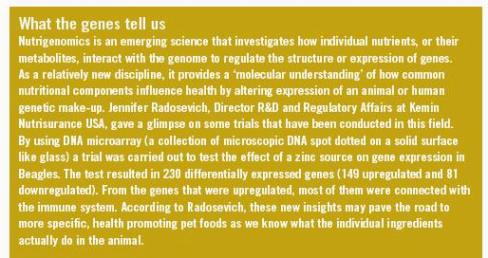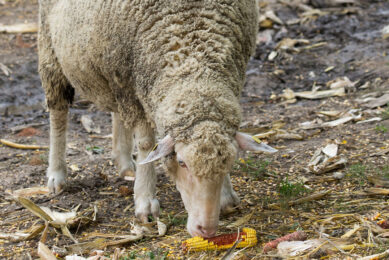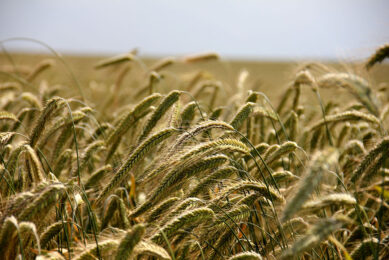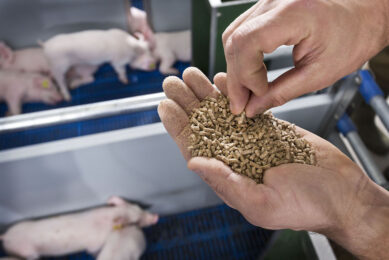Pet food: keeping it fresh and tasty

The 4th Kemin Annual Pet food Symposium held in Prague, October 21-22, brought together experts from around the world to discuss palatability and freshness; issues that are probably some of the most important ones to consider while producing profitable pet food.
By Emmy Koeleman
A premium pet food manufacturer spends a considerable amount of time conducting controlledfeeding studies to determine the right combination of ingredients and processing techniques to produce a nutritious, palatable food. Palatability is a term used to describe how well a dog or cat likes the taste, smell, and texture of a food. To increase the palatability, processors often use sugars, meat by-products, enzyme digests and some other natural components.
According to Thomas Webb, R&D manager at Kemin Nutrisurance USA, palatability of the product is effecting how the product is valued in the market and thus in turn has a great effect on market share. In his speech at the symposium he mentioned that palatable diets can be formulated without the addition of palatability enhancers. However, this will increase the costs as high quality raw materials need to be used. When using lower quality raw materials, an equally complete and equally palatable diet can be made when palatability enhancers are added.
This could be less expensive, although it is dependent on which palatability enhancers are used and at which dosage rate.
Freshness
If a pet food is eaten or refused by the animal is considerably related to the freshness of the product. As explained by Koen Meynen, senior scientist at Kemin Nutrisurance Europe, the palatability is influenced by smell, taste, texture and experience. In terms of freshness the product needs to be free of off-flavours caused by chemical or microbiological deterioration. These off-flavours can be caused by oxidation (mainly of fat), mould growth, bacterial growth, flavour or aroma profile change or texture change.
In terms of oxidation problems, the risks are the highest when highly unsaturated fatty ingredients such as fish meal, or pro-oxidative ingredients such as blood meal are used. He further explained this by showing a test that was done with an oxidation inhibiting product (Termox®) and showed that poultry meal treated with this product and used in cat food increased the consumption ration compared to cat food that contained untreated poultry meal. The difference in consumption ratio was even bigger after three months compared to the start of the trial. Comparable results were shown in dogs.
Lipid oxidation
As mentioned earlier by Meynen, oxidation is an important issue in the production of pet food. Edwin. N. Frankel from the University of California in the USA delved further into this topic. He explained that the oxidisability of vegetable oils differs (Figure 1). To prevent lipid oxidation from occurring, antioxidants are often added to the product, including tocopherols, ascorbic acid and natural antioxidants.
The natural antioxidants group – containing flavonoids, rosemary, spice extracts and tea extracts – is gaining more interest as more pet food companies include natural or organic products in their portfolio. In his second presentation, Meynen elaborated further on the antioxidant issue and discussed the practical application of these ingredients. Meynen said that for normal diets you have to make sure that 1/3 of the final antioxidants content are antioxidants in the kibble that survived extrusion. 2/3 of the final antioxidants are added outside the kibble in the coating. At different stages during the processing of pet food the antioxidants can be added;
during the rendering process and during the pet food production process. However, bulk fat may be initially treated by the renderer and then re-dosed with an antioxidant after receipt by the pet food producer.
Antioxidants are available in dry and liquid form, although in pet food mostly dry antioxidants are used. It is important to know how long an antioxidant works. Products are sometimes stored for weeks or even months which can lead to a decreased palatability of the product. Meynen said that if the antioxidant properties remain stable after two to three months, it is expected that the pet food is well protected and remains stable during its shelf life. The recommended dosages of a natural antioxidant are listed in Table 1.
Mycotoxins
Palatability means more than just adding a flavour. Increasing the palatability of pet food also involves oxidation and mycotoxin control. Professor Paragon from the Alfort National Veterinary School in France talked about the thresholds of mycotoxins in pet food. He said
that mycotoxins (of all the potential contamination sources) are among the most worrying because they appear frequently in raw materials and can thus appear in commercial pet foods as well.
The dry feeds are of particular interest because they contain a large portion of cereals (corn, wheat) and their by-products. Bran is particularly dangerous where toxins are at least three-fold more concentrated compared to the raw kernel. Paragon emphasised that the mycotoxin
risk can be managed at the production level: pre- and post harvest control. Secondly, the risk can be controlled at the production level: quality of storage, quality of sampling/analysis among others. Lastly, the pet owners can also reduce the risk of mycotoxicosis by proper storage of the products.
Conclusion
Research with flavour enhancers has proliferated intensely and many different flavour enhancers of liquid and dry types are available. Widely known enhancers for pet animals include sugars, meat by-products, enzyme digests and some other natural components. Animal proteins, including fresh unrendered vegetablebased products, are also commonly used. However, a palatable pet diet not only depends on the flavours added. Freshness and mould control are important parameters which should be taken into account.
See Pet Food Dossier: Click here
Source: Feed Mix magazine Volume 17 No. 1 (2009)
Join 26,000+ subscribers
Subscribe to our newsletter to stay updated about all the need-to-know content in the feed sector, three times a week. Beheer
Beheer









 WP Admin
WP Admin  Bewerk bericht
Bewerk bericht